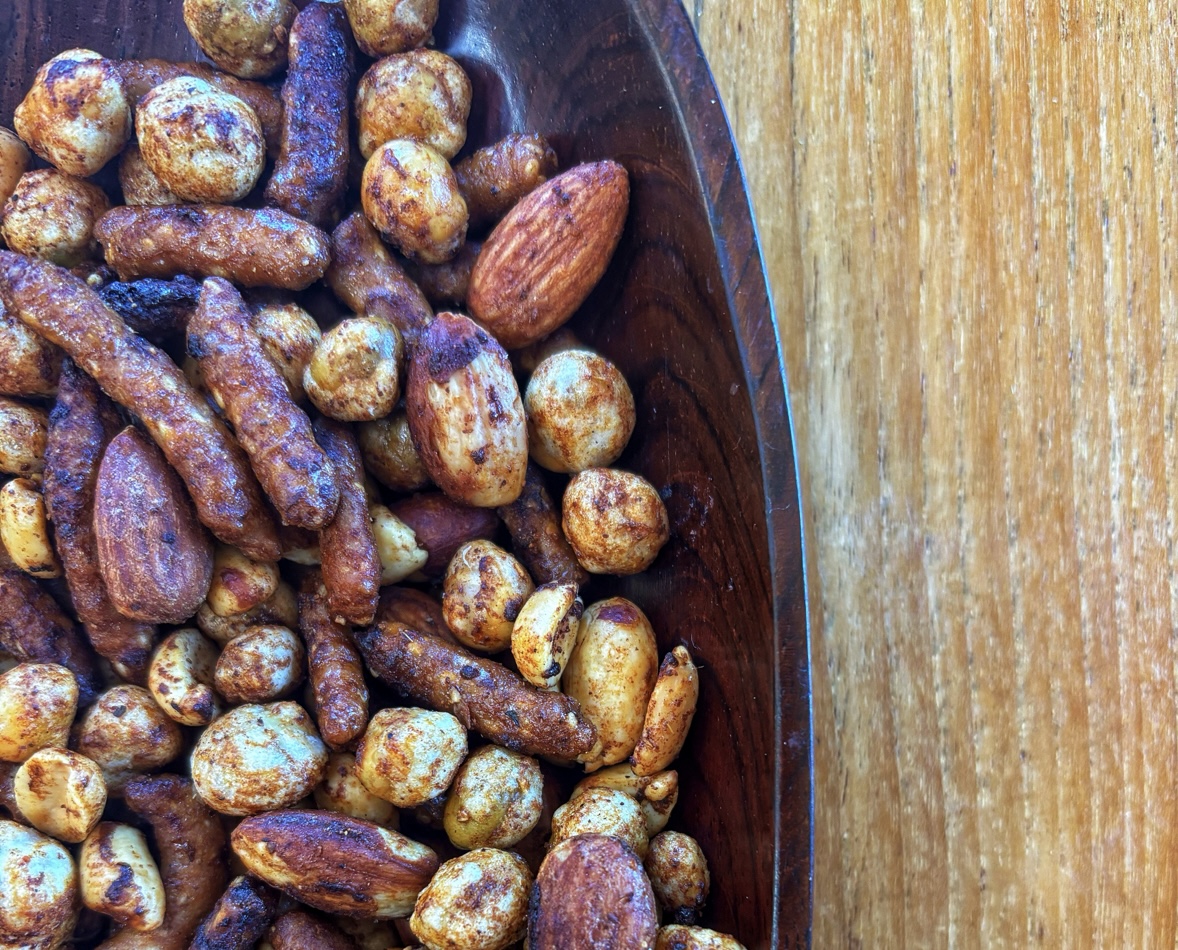Green, green, green. Everyone is talking green, and when it comes to the kitchen, Green is definitely relevant.
Beyond the food we prepare, green relates to the products we use to maneuver ourselves around the kitchen. To help you get a better grasp on how to live a greener life in the kitchen, Family Eats has come up with nine helpful hints that you can begin to implement into your lifestyle almost immediately.
But, before we get to the list, we spoke with A.J. Reidel, a highly regarded marketing authority in the housewares industry, and Senior Partner at Reidel Marketing Group, a market research company specializing in the housewares industry. For the past several years, she has reported about the growing interest from consumers to purchase environmentally friendly products for their home. In 2004, the Group created the HomeTrends Influentials (HIP) panel. These trendsetting consumers – also called HIPsters are among the first to buy new home goods and housewares products, and are often asked for advice and opinions by family and friends.
“We have found that a number of HIPsters are attempting to reduce their ecological footprint,” says Riedel. “They are doing their part by embracing an ever wider variety of environmental initiatives.” While research has found that consumers believe it is important to purchase environmentally friendly products for their homes, their research has revealed that convenience and economics that are driving consumer choices. Here, we offer suggestions that meet all those demands.
1. Compost in the kitchen
“So far, not very many HIPsters have embraced composting,” says Reidel. “It may gain widespread acceptance in the recycling trend-forward areas of the country, but I really can’t see it gaining widespread acceptance unless companies come up with countertop systems that are both attractive and easy to use.
But, in the spirit of fitting in with one of our New Year’s resolutions, we feel that composting is a wonderful way to reduce waste and re-use the compost from the kitchen. To that end, there are a host of kitchen composting products available, that don’t take up much room. For example,Anchor Home CollectionsTM introduces a stylish Compost Pail for the indoors. The decorative pails are designed for countertop use and have a built-in carbon filter to eliminate odors. Products like this allow you to collect scraps for your composting while not detracting from your kitchen décor.
Go ahead, save your food scraps and feed your garden, not the landfill.
2. Pull the Plug
When it comes to appliances in the kitchen, the big ones – refrigerators and ovens are the big draw on energy. That is why consumers (including those HIPsters) are replacing those energy guzzlers with Energy Star rated appliances. But, as Reidel points out, “HIPsters embrace new products that will save them money by saving energy.”
Whether it is cost savings or the environment that is at the forefront of consumer buying decisions, when purchasing a new small appliance, think about how that can make you save money – and the environment. Did you know that a microwave oven uses more electricity to power its digital clock than cook the food? How much energy will you expend by unplugging the toaster every morning?
Companies like Jura-Capresso offer features that draw less power. The ENA 5, which has won multiple awards, including two for saving energy, is highly energy efficient. It draws no energy when turned off, but still plugged in. it has an optional Energy Saving Standby Mode, that can reduce power consumption by up to 40 percent.
If you’re not in the market to purchase a new item, you can still save money in the kitchen. Look in your cupboards and seek out items that will help you consume less energy. Suggestions might include the slow cooker, pressure cooker, or even a fondue pot.
3. Seek Products Made With Renewable, Eco-Friendly Materials.
We can’t escape the message about deforestation, so the call for eco-friendly products from renewable sources resonates with a growing number of consumers. To that end, the past few years have brought a host of bamboo and other plant-based products to the market, from cutting boards to tableware to kitchen textiles.
As an alternative to petroleum-based plastic or lead-risk ceramics, the Eco Collection tableware is made of 100% powdered plant fibers, such as bamboo, rice hulls and coconut, mixed and formed with a proprietary composite of starch-based binders. Similarly,
Lifetime Hoan’s green product line called EcoLife Rice Hull includes serving pieces, dishes and bowls.
In addition to using more eco-friendly materials, seek out product made with recycled materials such as the GoodNow™ line of kitchen utensils from Lamson and Goodnow, made of 100% post-consumer, recycled paper—no new timber or plastic is used.
4. Take-With, Not Take-Out
The reduce, reuse and recycle mantra is at the core of the trend towards bringing your own – water and lunch – while on the go. Thermal mugs and lunch box items are a perfect way to cut back on waste. No longer are plastic bags and foil needed to wrap your sandwich and other lunch-time fixings. A growing number of companies offer up fashionable products for lunch or hydration. For instance, the Aladdin® Recycled and Recyclable Water Bottle is made with eCycle®, which includes 90% recycled food-grade polypropylene containing 22.5% post-consumer content; the bottle is recyclable where #5 plastic is collected. The bottle is BPA-free, FDA-compliant and dishwasher-safe. Products such as these help reduce the consumption of disposable, single-use water bottle, and help you look fashionable as well.
5. Use Cloth Instead of Paper Towels or Napkins
Getting back to the throw-away issue, choosing cloth napkins instead of paper ones, and using cloth to wipe up spills and the counters rather than paper towels, is a better choice on the environment. To add to your environmentally friendly choice, choose cloth made of organic cotton, bamboo fibers, hemp and wood-based cellulose pulp. The MUKitchen line of kitchen towels made 100% bamboo. Fast-growing bamboo, grown without pesticides or chemicals, is the perfect natural substitute for cotton, which has a much larger environmental footprint. As the company says, “Woven bamboo is an ultra-soft fabric that stands up to tough daily use, is super-absorbent, fast-drying, and releases a natural anti-bacterial agent that reduces bacterial growth.”
And, while you’re cleaning up anything from spills to the kitchen counter, help save the landfill from a heap of single-use paper towels by using the Sponge Cloth from Twist. Designed to work over and over again, the Sponge Cloth makes is easy to transition from the habit of using paper towels.
6. Focus on Green Cleaning
Eco –friendly kitchen cleaning products are coming out of the woodwork these days, and as Reidel notes, “Other environmental practices that are being embraced by HIPsters including switching to more environmentally friendly cleaning products or common household products like vinegar, baking soda and borax.” Environmentally friendly lines such asShaklee, Seventh Generation or J.R. Watkins NaturalHome Care, are growing in popularity, but can add up in the pocketbook. So, consumers are switching to white vinegar and water to clean their windows and borax and water as a general cleaner.
If you haven’t made the foray into making these home concoctions, you can always try Lotus Home Cleaning System. It infuses cold tap water with an extra oxygen atom, creating a natural sanitizer that can kill bacteria and viruses, and neutralizes pesticides.
Finally, look for alternatives to odor-masking products like Glade. The smellkiller™ Air Cleanser eliminates odors without the need for finding a product to mask the odor. This is a heavy stainless steel disc that sits in a small bowl of water. It neutralizes odors by using only water and air—no chemicals, sprays or electricity are needed. And, it lasts a lifetime.
7. Dehydrate your food.
I never really considered a food dehydrator as a product that I’d desire in my kitchen, but I may be changing my mind. By removing water from foods, they can be preserved for longer periods of time. From fruits and vegetables, to meats and grains, the food dehydrator is not only a great tool to help cut down on food waste from food not being used, but it is a perfect way to prepare healthful foods for snacktime.
Here is a link for some reviews on a variety of different food dehydrators:
http://www.motherearthnews.com/
8. Make the Right Choice When Cooking
When cooking, choose quality cookware that conducts heat well, or opt to use a small appliance that will use less electricity than cooking in the oven.
Although slow cookers are used for a longer period of time when compared to cooking in a conventional oven, the lower cooking temperature results in a cost savings over the higher temperature over a shorter period method of cooking in the oven.
On the same note, using pressure cookers can save money because foods cook in about one-third the time of conventional methods.
Other eco-friendly cookware options include cooking on an induction cooktop, using a fondue pot (it’s lot’s of fun, too), or choosing pans made in an eco-friendly manner, such as the Alternative line from Starfrit. Composed of 99% recycled aluminum,
the Alternative cookware features a chemical-free, non-toxic ceramic coating designed to retain heat longer, saving energy up to 20%.
9. Switch From Plastic to Glass
Our fear of plastic food containers has left us scrambling for the past. We made the switch several years ago when the twins were babies, to glass bottles instead of the BPA-laden plastic ones we had unknowingly used before. Even if there are no babies in your household, switching from plastic to glass is a good choice –Especially since the FDA is nowexpressing concern about the possible health risks from bisphenol-A, BPA, which is widely used in plastic and in food packaging.
Whether it is for use in the pantry or food storage in the fridge, glass storage containers such as the No-Leak LidsTM Glass Storage Line Pyrex® offer a variety of benefits. The glass is non-porous, keeps food tasting fresher compared to plastic, it doesn’t absorb food odors, ideal for freezer storage, washes up easily by hand or in the dishwasher, reduces landfill (from plastic containers), is more attractive than plastic, and helps us move away from the throw-away mentality.
As an added benefit, the Pyrex® No-Leak LidsTM feature leak-proof, air-tight sealing lids for storing liquid and dry foods and for taking food on-the-go. The metallic grey lids, made of BPA-free plastic, have snap vents for heating foods in the microwave.


